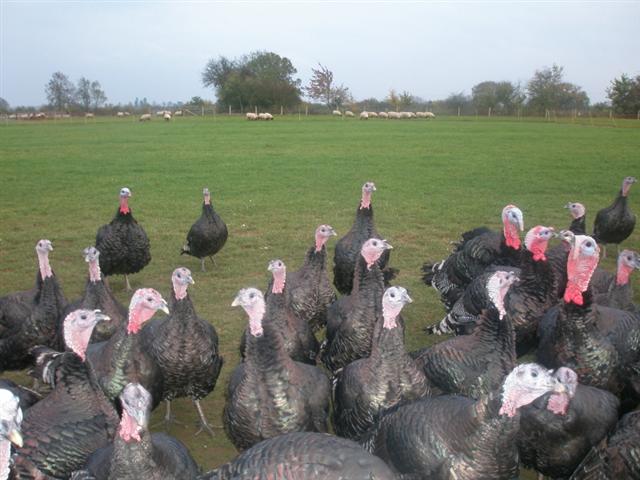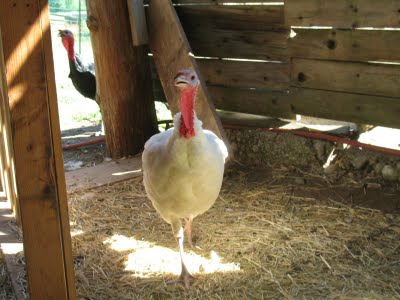 |
||||||||||||||||||||||||
| Major Activities |
Poultry:: Turkey:: Rearing |
|||||||||||||||||||||||
TURKEYGeneral InformationTurkeys are kept mainly for meat. Sexes can be separated by vent system of sexing at the time of hatching. Males are heavier than females. Mature males of all varieties have conspicuous black beards attached to the skin of the upper region. Dewbill or snood, a fleshy protuberance near the base of the beak, is relatively large, plump and elastic in males. It is relatively small, thin and non-elastic in females. Most of the modern turkeys have been selected for rapid growth and wide breast conformation. Under natural matings fertility is usually low and hence artificial insemination is commonly employed to obtain desired fertility levels. In natural mating, a male female ratio of 1:5 is desirable. The average age at first egg is around 30 weeks. Average egg production is around 100 eggs/hen turkey/year. Eggs of a normal turkey weigh around 70 g. Egg is noticeably pointed at one end with strong shell. Turkeys similar to chicken lay their eggs during the day time. When not needed for hatching turkey eggs can be used as human food. Eggs are palatable and nutritious as chicken eggs. Hatching period is 28 days. With proper care turkeys attain 4 kg body weight at about 12-14 weeks of age. Although body weight increases with advancement of age, feed efficiency is adversely affected. At 20-24 weeks of age they attain a body weight of 8 to 9 kg. Feed efficiency is naturally poor for small turkeys than large turkeys. Rearing system Free range system of rearing
Free Range Rearing In the free range system, in one acre of fenced land we can rear 200-250 adult turkeys. Shelter should be provided during night at the rate of 3-4 sq.ft. per bird. They should be protected from predators during scavenging. Planting of trees is desirable for providing shade and cooler environment. The range should be rotated which will help to reduce incidence of parasite infestation. Free range feeding Health cover Floor, feeder and water space requirement of turkeys:
Intensive system of rearing:
Intensive Rearing System Housing
When turkeys are reared under deep litter system, the general managemental conditions are similar to that of chicken but care should be taken to provide adequate floor, water and feeder space to accommodate the large bird. ( Source: Farm Digest, Canara Bank, July-September 2008) | ||||||||||||||||||||||||
Technologies |
||||||||||||||||||||||||
Veterinary Services |
||||||||||||||||||||||||
| Home | Success Stories | Publication | Gallery | Forms | FAQs | Related Links | Contact | |
||||||||||||||||||||||||
| © All Rights Reserved. TNAU-2008. |
||||||||||||||||||||||||

